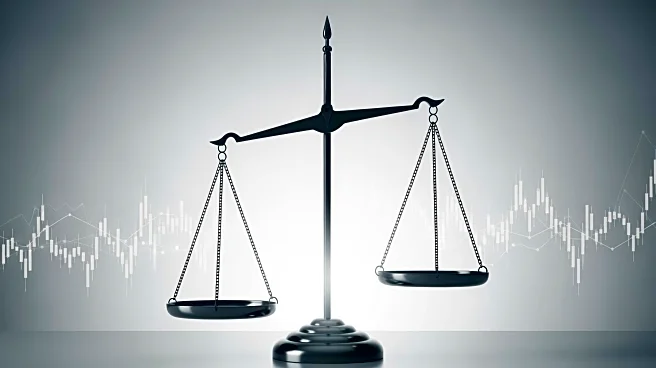What's Happening?
The demand for Treasury bills (TBs) and Commercial Papers (CPs) has surged due to the attractive interest rates they offer. A recent auction conducted by the Central Bank of Nigeria (CBN) on October 8,
2025, highlighted this trend, where the total subscription demand for the 364-day TBs reached N986.33 billion, but only N503.298 billion in bids were successful. This indicates that the demand significantly exceeded the supply. Similarly, CPs, which require a minimum investment of N5 million, are also experiencing high demand, often leading to rationing among investors. The high interest rates offered by these financial instruments make them appealing to investors looking to lock in funds for extended periods.
Why It's Important?
The increased demand for TBs and CPs reflects broader economic trends where investors seek stable and high-yielding investment options amid fluctuating market conditions. This trend is significant for the financial markets as it indicates investor confidence in these instruments as safe havens for capital preservation. The high demand also suggests that investors are willing to commit substantial funds for longer durations, which can impact liquidity in other sectors. For the U.S., this trend could influence foreign investment flows and interest in U.S. Treasury securities, as global investors compare yields and risk profiles across different markets.
What's Next?
As demand continues to outstrip supply, the CBN may consider adjusting the issuance volumes or interest rates to balance the market. Investors will likely continue to monitor interest rate trends and economic indicators to make informed decisions about their investment strategies. The ongoing high demand could also prompt financial institutions to develop new products or services to cater to investor needs, potentially influencing the broader financial landscape.
Beyond the Headlines
The high demand for TBs and CPs underscores a shift in investor behavior towards more conservative investment strategies, possibly driven by economic uncertainties. This trend may also reflect broader global economic conditions, where investors are seeking stability amid geopolitical tensions and market volatility. The implications for financial markets include potential shifts in capital allocation and the need for regulatory bodies to ensure market stability and transparency.











